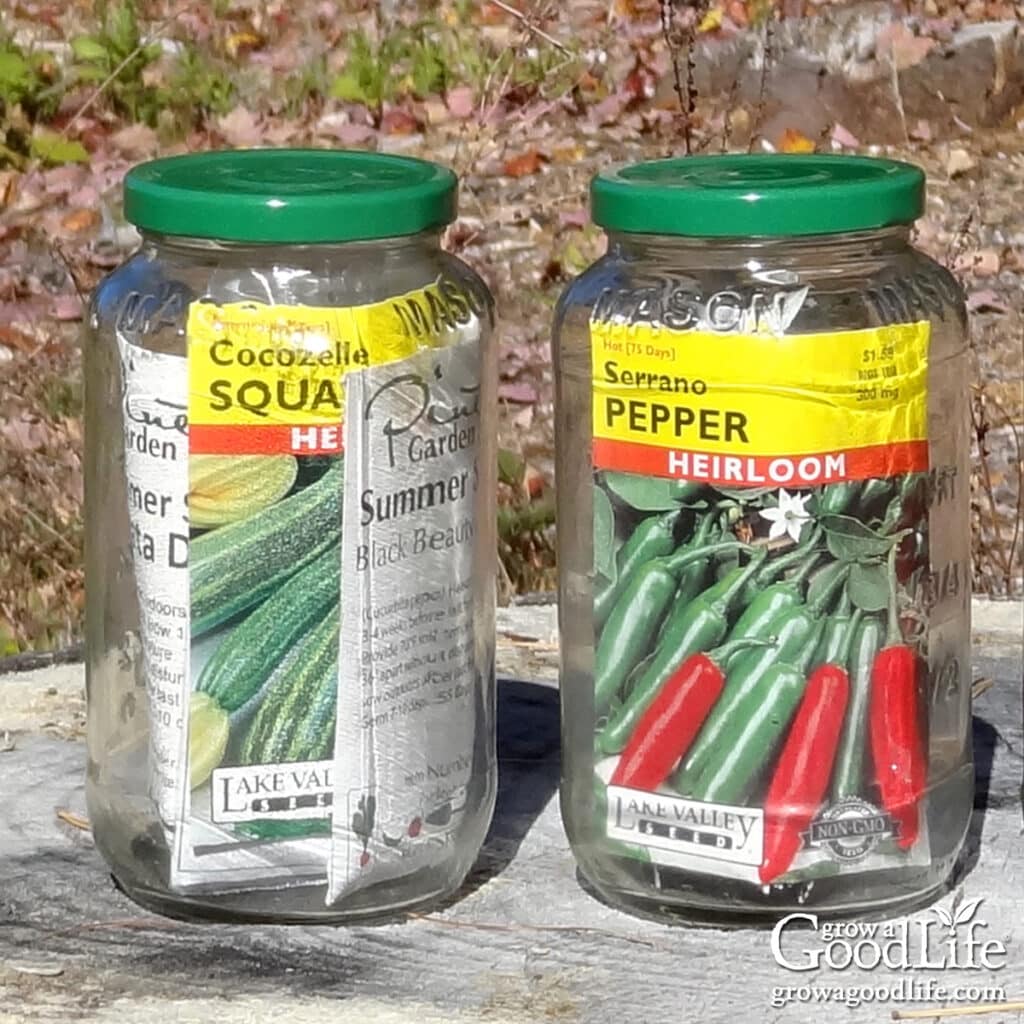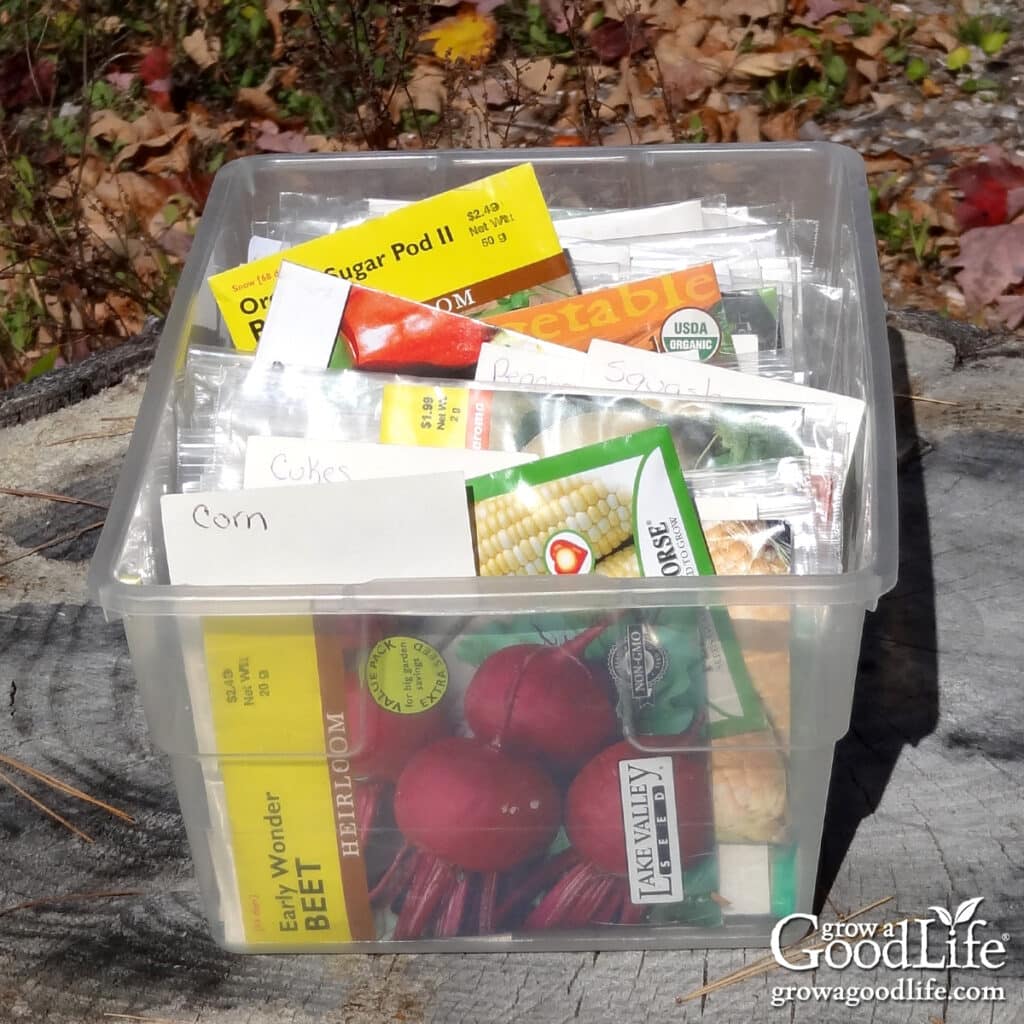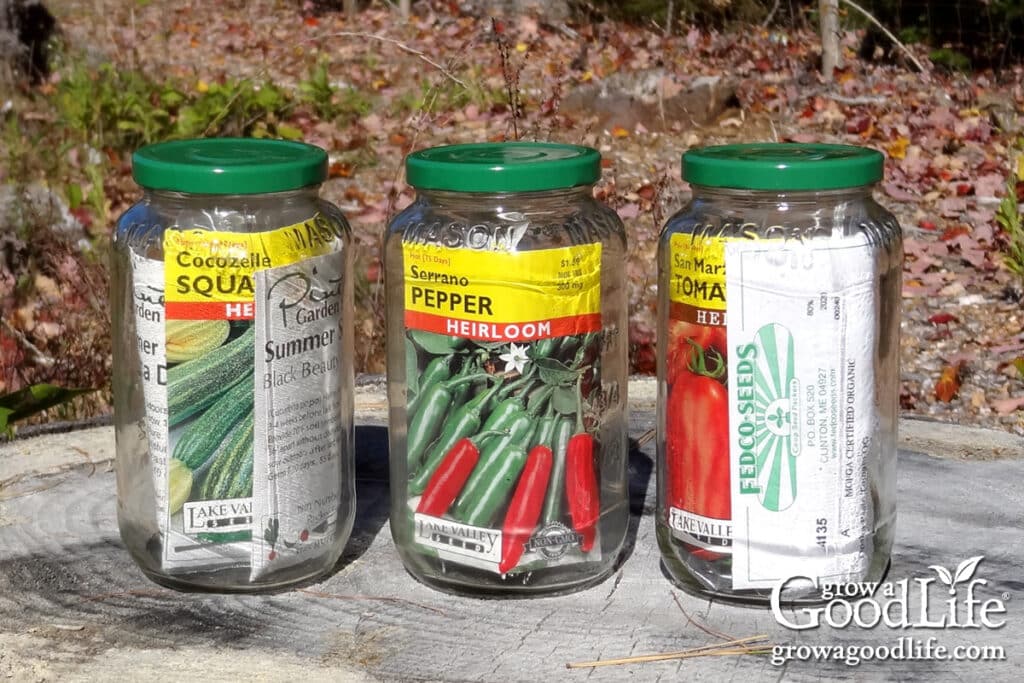How to Store Seeds for Long-Term Viability
This post may contain affiliate links, which means that I may receive a commission if you make a purchase using these links. As an Amazon Associate I earn from qualifying purchases.
Learn how to store seeds so they last. Discover simple seed storage tips to keep your vegetable, herb, and flower seeds cool, dry, and ready to sprout for years to come.

If you’re like most of us who love collecting seed packets, you probably end up with more seeds than you can use in a single season. Whether it’s leftovers from purchased packets or seeds you’ve saved from your own garden. But without proper storage, those little seeds can lose their ability to sprout.
The good news? Keeping seeds viable isn’t complicated. By following a few simple principles, you can extend the life of your seeds for years, saving money and ensuring you always have your favorite varieties ready for planting.
Why Proper Seed Storage Matters
Seeds are living embryos. Even when they look dry and lifeless, they are still breathing and slowly using up their stored energy. If they are exposed to heat, light, or moisture, seeds can break dormancy too soon or lose their ability to germinate altogether.
Storing your seeds properly means:
- Saving money by reusing leftover packets instead of buying new ones every year.
- Protecting your investment in rare or heirloom varieties.
- Preserving seeds you’ve saved from your own garden for future planting.
The Golden Rules of Seed Storage
The key to long-lasting seeds is simple: keep them cool, dark, and dry.
- Cool: Seeds last longest when stored at a consistent, cool temperature.
- Dark: Light can trigger germination or reduce seed quality.
- Dry: Moisture encourages mold, rot, or premature sprouting.
A handy rule of thumb: Temperature (°F) + Humidity (%) should be less than 100. For example, 60°F with 30% humidity = 90, which is safe for seed storage.
Tips for Storing Seeds
I use two shoebox-sized totes to store my seeds. One for flowers and herbs, and another for vegetables. Inside each box, I use index cards to divide the packets into sections, such as tomatoes, peppers, onions, lettuce, and squash.
Each packet is slipped into a zipper bag to protect it from moisture before being filed into the correct section. This system keeps everything organized and easy to find, while also maintaining dry and viable seeds for years. The shoe boxes are then stored in a dark corner shelf in the basement away from direct sunlight.

Find a Location to Store Your Seeds
A consistent, dry, cool spot in your home works perfectly for the short term, while storing seeds in the freezer will help them last longer.
- Short-term (1 season): Keep seeds in their original seed envelope, seal with a bit of tape, and tuck them into a zipper bag or a container with a tight lid. Store indoors in a cool and dark area, not in a hot shed or damp basement.
- Long-term (several years): Place packets into airtight jars, tins, or sealed bags with a desiccant packet to control moisture. Store in a refrigerator or freezer for maximum longevity.
Best Containers for Seed Storage
Once you’ve decided where to store your seeds, the next step is choosing the right container. The goal is to keep seeds dry, protected, and organized. You don’t need to use anything expensive. The key is finding something that seals out moisture and pests while keeping your packets tidy and easy to access.
Here are some good options to consider:
- Paper envelopes or coin packets: Ideal for dividing bulk seeds or saving your own. Paper allows airflow and prevents moisture buildup.
- Glass jars or mason jars: Provide an airtight seal when paired with a tight lid. Great for long-term storage in cool places.
- Metal tins: Repurposed cookie tins, tea tins, or candy tins make sturdy, pest-proof containers.
- Plastic tubs with lids: Shoebox-sized storage tote or photo storage boxes can hold multiple packets and keep everything organized.
- Resealable zipper bags: Useful for slipping seed packets inside for extra protection. Add a small silica gel desiccant pack to control humidity.
- Commercial seed storage boxes: Photo organizers or specialty seed vaults are designed to store seeds neatly by category.
No matter which container you choose, be sure your packets are clearly labeled with the variety name and year purchased or saved.

Storing Seeds in the Refrigerator or Freezer
If you want to extend seed life as much as possible, refrigeration or freezing can be a good option. Both provide consistently cool conditions, which slow the natural aging process of seeds.
- Refrigerator: A reliable option, as temperatures are cool and stable, which helps slow down the rate at which seeds lose viability. Just be sure to use airtight containers with desiccants. Refrigerators are humid, and you want to keep that moisture away from your seeds.
- Freezer: Freezing is the best option for long-term seed storage because it pauses the aging process. Seeds stored in the freezer can remain viable for many years, sometimes decades. The catch is that seeds must be very dry before they are frozen. Otherwise, the water inside them can form ice crystals and damage the embryo.
Always let frozen seeds return to room temperature before opening the container to prevent condensation from forming on the seeds.
How Long Do Seeds Last?
Every crop has a different natural shelf life. Depending on how the seeds are stored, most remain viable for several years. The list below gives you a general idea of how long vegetable seeds will last:
- 1 Year: Leeks, onions, parsnips, and scallions
- 2 to 3 Years: Arugula, beans, carrots, celeriac, celery, corn, eggplant, lettuce, okra, peas, peppers, and spinach
- 3 to 4 Years: Artichokes, beets, broccoli, Brussels sprouts, cabbage, cauliflower, collards, kale, kohlrabi, mustard, pumpkin, radish, rutabagas, summer squash, Swiss chard, and winter squash
- 5 to 6 Years: Cucumbers, melons, tomatoes, turnips, and watermelons
FAQs About Seed Storage
Can I store seeds in the garage or shed? Not recommended. Temperatures fluctuate too much, and humidity can shorten seed life.
Do seeds really need to be kept in the dark? Yes. Light can trigger premature germination or weaken seed viability.
How do I know if old seeds are still good? Test a few with a seed germination test with a damp paper towel before planting season.

Seeds are Precious
They carry the promise of next year’s harvest. With just a little care, you can keep your seeds viable for years by storing them in cool, dark, and dry conditions.
Whether you use a simple shoebox system like mine or invest in airtight jars with desiccants, the key is consistency. Store them well, and your seeds will reward you with strong germination and abundant harvests year after year.
Next steps:
- Try a seed germination test on older seeds.
- Learn how to save your own seeds, starting with beans.
- Tips for buying seeds for your vegetable garden.
- Learn how to pre-sprout seeds for faster germination.
